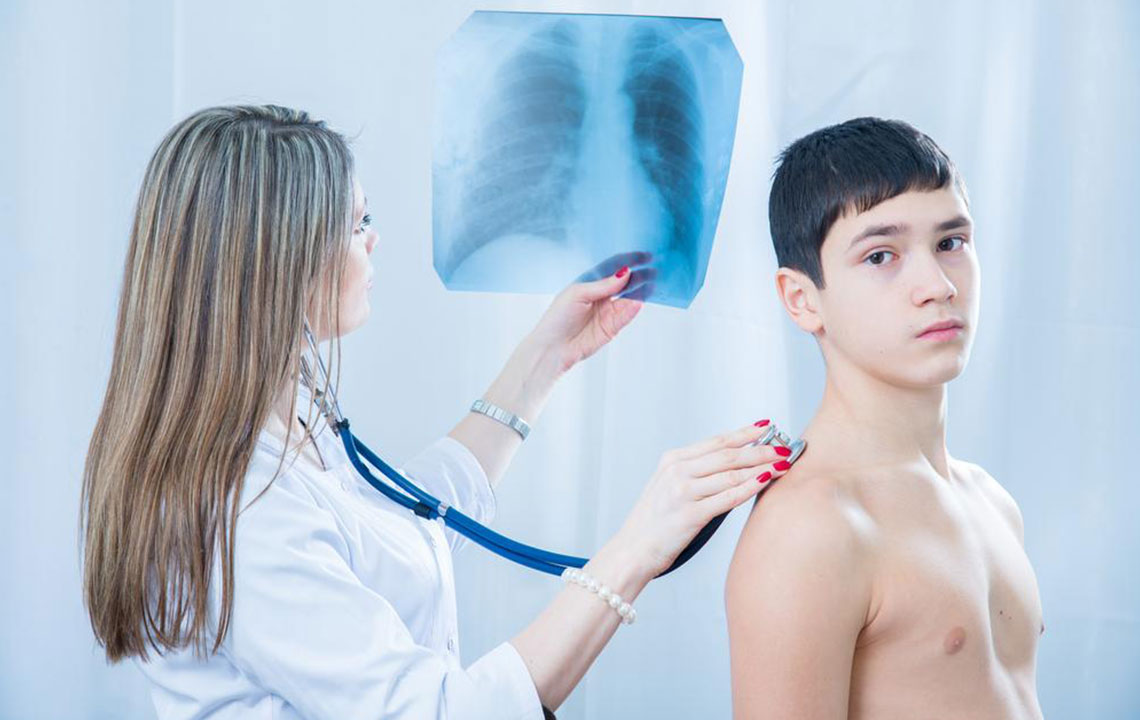Comprehensive Guide to Pneumococcal Pneumonia: Symptoms, Prevention Strategies, and Effective Treatments
This detailed guide explores pneumococcal pneumonia comprehensively, covering its symptoms, diagnostic methods, treatment options, prevention strategies including vaccination, and lifestyle tips. Understanding these aspects helps in early detection and effective management of this serious bacterial lung infection, reducing health risks and improving patient outcomes. Stay informed with expert recommendations to safeguard yourself and your loved ones against pneumonia caused by Streptococcus pneumoniae.

Comprehensive Guide to Pneumococcal Pneumonia: Symptoms, Prevention Strategies, and Effective Treatments
Pneumococcal pneumonia represents a significant infectious disease that primarily affects the lungs, caused by the bacterium Streptococcus pneumoniae. This bacterial pathogen is responsible for a considerable number of respiratory infections globally, impacting millions of individuals each year. Despite advances in medicine, pneumococcal pneumonia remains a serious health concern, especially among vulnerable populations such as young children, the elderly, and immunocompromised individuals.
Understanding the nature of pneumococcal pneumonia is essential for early detection and effective management. The illness develops when the bacteria invade the lungs, leading to inflammation and infection of the alveoli—the tiny air sacs where oxygen exchange occurs. This condition can lead to severe complications if not diagnosed and treated promptly, including bloodstream infections (bacteremia), meningitis, and lung abscesses.
— The Incidence and Impact of Pneumococcal Pneumonia —
Each year, thousands of adults and children suffer from pneumococcal pneumonia worldwide. According to recent epidemiological data, the mortality rate associated with severe cases ranges between 5% and 7%, emphasizing its seriousness. The disease tends to be more prevalent during colder months when respiratory infections typically surge. The risk factors include age extremes (young children and seniors), underlying health conditions like diabetes or heart disease, smoking, and compromised immune function.
— Recognizing Symptoms and Early Warning Signs —
Early diagnosis of pneumococcal pneumonia hinges on recognizing its typical symptoms. Initial signs often include high fever—commonly exceeding 100.4°F (38°C)—a persistent cough that may produce mucus tinged with blood, and difficulty breathing. Patients might also experience chest pain described as sharp or stabbing, which results from lung inflammation. Additional symptoms can encompass nausea, vomiting, headaches, body aches, fatigue, and chills. These symptoms can progress rapidly, leading to severe respiratory distress if not addressed.
It is crucial for individuals experiencing these signals to seek medical attention immediately for timely diagnosis. Diagnostic tools such as chest X-rays are instrumental, revealing characteristic infiltrates or consolidation areas in the lungs that confirm infection. Blood tests and sputum cultures can also aid in identifying the causative bacteria and guiding appropriate treatment.
— Treatment Protocols and Antibiotic Use —
The cornerstone of pneumococcal pneumonia management involves antimicrobial therapy. Antibiotics like Penicillin G, Amoxicillin, Cefotaxime, and Vancomycin are commonly prescribed, depending on the severity and bacterial resistance patterns. Treatment typically starts with empirical therapy, which may be adjusted once laboratory results specify the pathogen's sensitivity. Antibiotics usually require several days of administration; however, it's common for initial improvement to be seen within 48 to 72 hours.
It is important to note that antibiotic resistance is an evolving challenge. Some strains of Streptococcus pneumoniae have developed resistance to certain antibiotics, complicating treatment. Therefore, healthcare providers often choose antibiotics based on local resistance patterns and patient-specific factors, including allergies and comorbidities.
— Vaccination as a Preventive Measure —
Prevention remains a critical component in reducing the incidence of pneumococcal pneumonia. Vaccines play a vital role here, primarily the 13-valent pneumococcal conjugate vaccine (PCV13) and the pneumococcal polysaccharide vaccine (PPSV23). These vaccines are recommended for high-risk groups, such as children under five years old, adults over 65, and individuals with chronic illnesses or immunosuppression.
Vaccination has proven effective not only in preventing pneumococcal disease but also in reducing its severity in breakthrough cases. Public health campaigns emphasize immunization as a standard preventative practice in pediatric and adult populations. Moreover, vaccination programs help decrease bacterial spread within communities, contributing to overall herd immunity.
— Additional Preventive Strategies and Lifestyle Tips —
Aside from vaccination, good respiratory hygiene is crucial. Measures include frequent handwashing, avoiding close contact with infected individuals, and covering coughs and sneezes properly. Maintaining a healthy lifestyle through balanced nutrition, regular exercise, and smoking cessation can bolster immune defense, lowering susceptibility to respiratory infections.
Special attention should be given to managing chronic health conditions, as these can predispose individuals to more severe infections. Regular medical checkups and prompt treatment of illnesses can significantly reduce the risk of developing pneumonia.
— Summary —
In summary, pneumococcal pneumonia is a preventable and treatable disease that demands awareness and prompt medical intervention. Recognizing the early symptoms—fever, cough, and breathlessness—and seeking immediate healthcare can prevent complications. Vaccination remains a cornerstone for prevention, especially in vulnerable populations. When diagnosed, appropriate antibiotic therapy guided by susceptibility patterns ensures effective treatment. Ongoing public health efforts are crucial in controlling the spread of Streptococcus pneumoniae and reducing disease burden worldwide.
Staying informed and proactive about pneumococcal pneumonia can save lives and improve health outcomes. If you or your loved ones belong to at-risk groups, consult healthcare providers about vaccination and preventive practices today.





